Osteochondritis Dessicans (OCD) Lesions
Osteochondritis dissecans (OCD) is a condition that develops in joints, most often in children and adolescents. It occurs when a small segment of bone begins to separate from its surrounding region due to a lack of blood supply. As a result, the small piece of bone and the cartilage covering it begin to crack and loosen.
The most common joints affected by osteochondritis dissecans are the knee, ankle and elbow, although it can also occur in other joints. The condition typically affects just one joint, however, some children can develop OCD in several joints.
In many cases of OCD in children, the affected bone and cartilage heal on their own, especially if a child is still growing. In grown children and young adults, OCD can have more severe effects. The OCD lesions have a greater chance of separating from the surrounding bone and cartilage, and can even detach and float around inside the joint. In these cases, surgery may be necessary.
Anatomy
A joint is where the ends of bones meet, such as your knee, ankle, or shoulder joint. Healthy joints move easily because of a smooth, slippery tissue called articular cartilage. Cartilage covers and protects the ends of your bones where they meet to form a joint.
The most common location of OCD is in the knee at the end of the femur (thighbone).
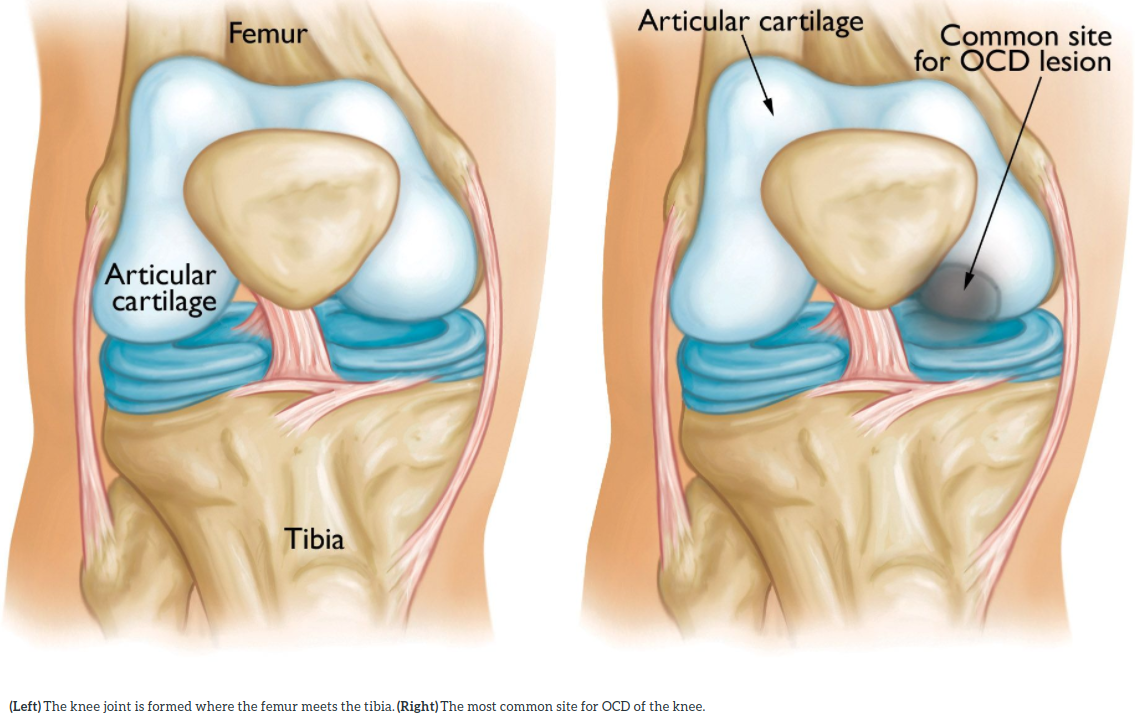
Cause
It is not known exactly what causes the disruption to the blood supply and the resulting OCD. Doctors think it probably involves repetitive trauma or stresses to the bone over time.
Symptoms
Pain and swelling of a joint — often brought on by sports or physical activity — are the most common initial symptoms of OCD. Advanced cases of OCD may cause joint catching or locking.
Doctor Examination
After discussing your child's symptoms and medical history, your doctor will perform a physical examination of the affected joint.
Other tests which may help your doctor confirm a diagnosis include:
X-rays. These imaging tests provide detailed pictures of dense structures, like bone. An x-ray of the affected joint is essential for an initial OCD diagnosis, and to evaluate the size and location of the OCD lesion.
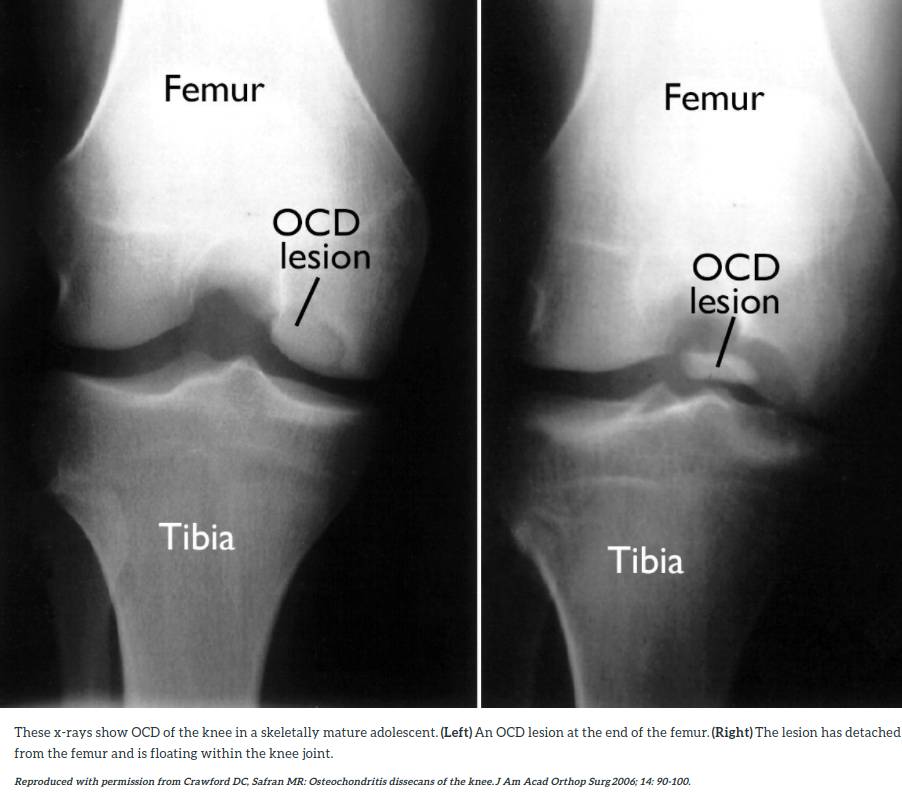
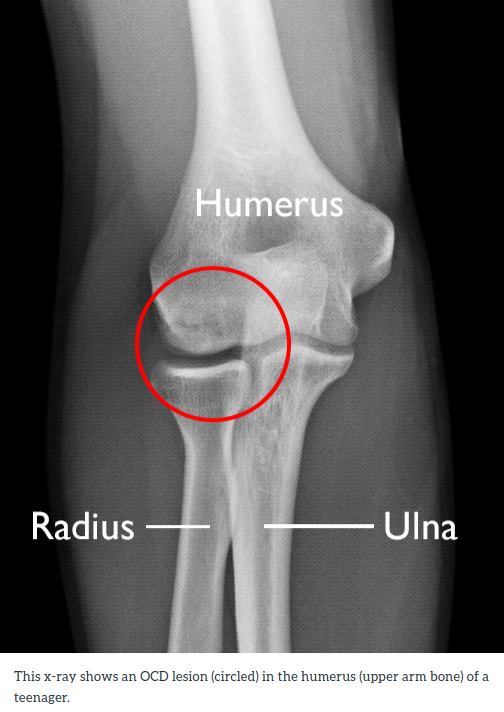
Magnetic resonance imaging (MRI) and ultrasound. These studies can create better images of soft tissues like cartilage. An MRI can help your doctor evaluate the extent to which the overlying cartilage is affected.
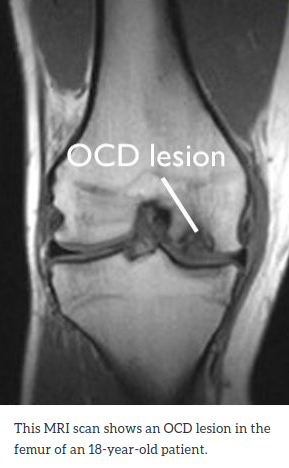
Treatment
Observation and Activity Changes
In most cases, OCD lesions in children and young teens will heal on their own, especially when the body still has a great deal of growing to do. Resting and avoiding vigorous sports until symptoms resolve will often relieve pain and swelling.
Nonsurgical Treatment
If symptoms do not subside after a reasonable amount of time, your doctor may recommend the use of crutches, or splinting or casting the affected arm, leg or other joint for a short period of time.
In general, most children start to feel better over a 2- to 4-month course of rest and nonsurgical treatment. They usually return to all activities as symptoms improve.
Surgical Treatment
Your doctor may recommend surgery if:
- Nonsurgical treatment fails to relieve pain and swelling
- The lesion is separated or detached from the surrounding bone and cartilage, moving around within the joint
- The lesion is very large (greater than 1 centimeter in diameter), especially in older teens
There are different surgical techniques for treating OCD, depending upon the individual case.
- Drilling into the lesion to create pathways for new blood vessels to nourish the affected area. This will encourage healing of the surrounding bone.
- Holding the lesion in place with internal fixation (such as pins and screws).
- Replacing the damaged area with a new piece of bone and cartilage (called a graft). This can help regenerate healthy bone and cartilage in the area damaged by OCD.
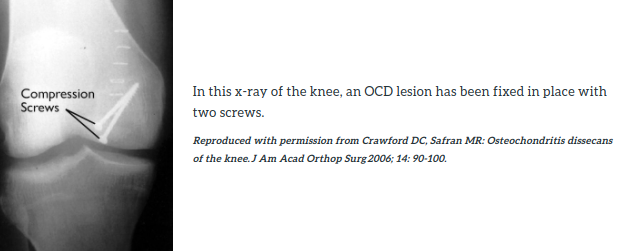
In general, crutches are required for about 6 weeks after surgical treatment, followed by a 2- to 4-month course of physical therapy to regain strength and motion in the affected joint.
A gradual return to sports may be possible after about 4 to 5 months.
To assist doctors in the management of osteochondritis dissecans, the American Academy of Orthopaedic Surgeons has conducted research to provide some useful guidelines. These are recommendations only and may not apply to every case.











